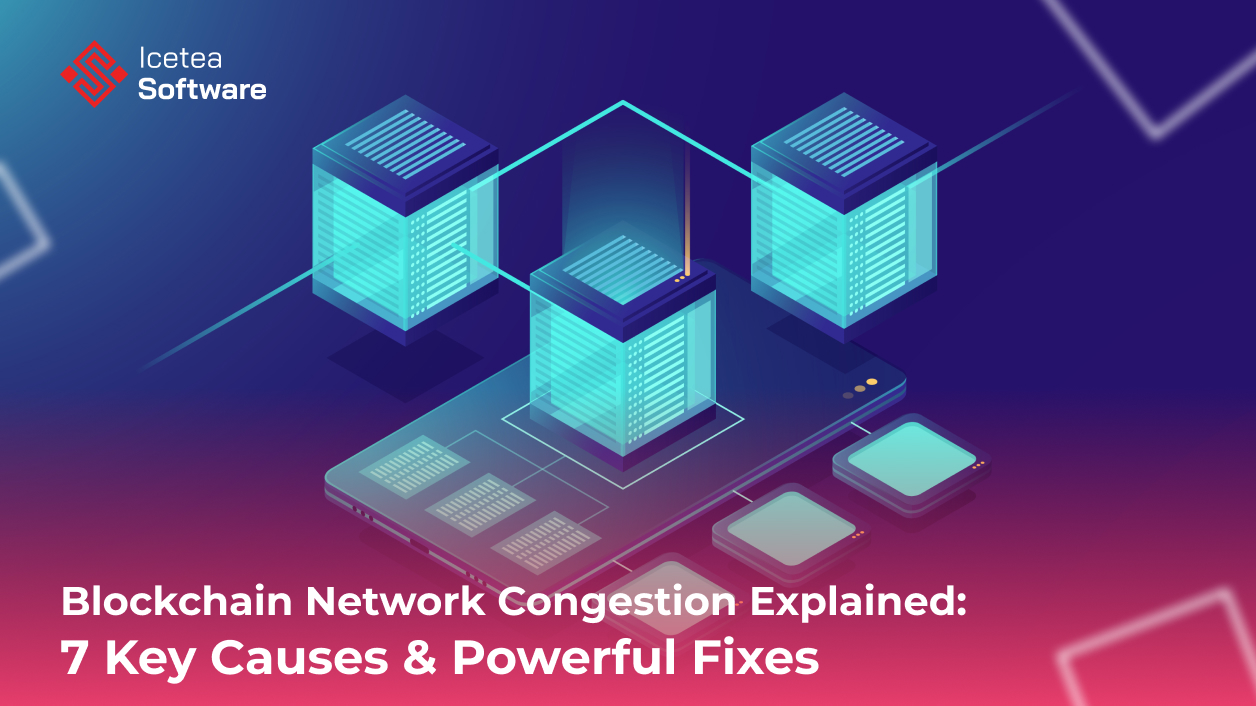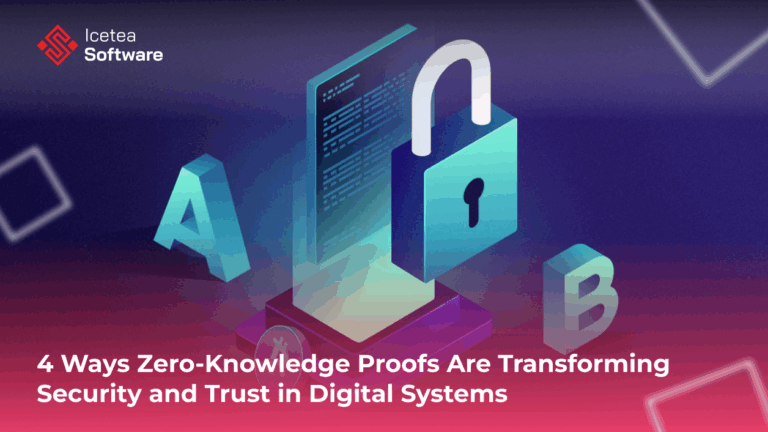Blockchain Network Congestion Explained: 7 Key Causes & Powerful Fixes
Introduction
Blockchain technology has revolutionized the way we conduct transactions, offering decentralized and secure financial interactions without the need for intermediaries. However, like any technological advancement, blockchain networks come with their challenges. One of the most pressing issues is blockchain network congestion, which can slow down blockchain transaction speed and increase blockchain transaction fees.
Blockchain network congestion occurs when the volume of transactions surpasses the network’s capacity, leading to delays and inefficiencies. This issue can significantly impact users, developers, and businesses relying on blockchain technology. Understanding what causes blockchain congestion, its effects, and how to reduce blockchain congestion can help mitigate these challenges and ensure smoother transactions.
Understanding Blockchain Network Congestion
Blockchain network congestion happens when the number of pending transactions exceeds the network’s ability to process them efficiently. Each blockchain has a specific transaction throughput, meaning it can only handle a certain number of transactions per second (TPS). When transaction demand exceeds this limit, a backlog forms, causing processing delays.
To illustrate, think of a highway during peak hours. When too many cars (transactions) try to pass through, traffic congestion occurs, slowing down movement. Similarly, blockchain networks face bottlenecks when demand outstrips capacity, leading to delayed crypto transactions and increased costs.
Key Factors Contributing to Blockchain Congestion
Several factors contribute to blockchain congestion, including:
- High Transaction Volume: Increased adoption and high trading activity can lead to an overflow of transactions awaiting confirmation.
- Limited Block Size: Each block in a blockchain has a fixed size and can only accommodate a limited number of transactions. If the block size is too small, transactions accumulate in the mempool (waiting area).
- Slow Block Generation Time: Some blockchains have longer block creation intervals, meaning transactions take longer to be processed.
- Complex Transactions: Some transactions require more computational power, slowing down processing speeds.
- Market Events and Token Launches: New token launches, NFT drops, and major market events often drive sudden spikes in transaction activity.
- Consensus Mechanisms: The method used to validate transactions (Proof of Work vs. Proof of Stake) affects how efficiently a network processes transactions.
- Regulatory and External Factors: Government regulations, technological shifts, and large-scale adoptions can also impact decentralized network congestion.
Effects of Blockchain Network Congestion
When blockchain congestion occurs, it affects the overall performance of the network, causing a range of issues for users and businesses. Below are some of the key consequences:
1. Increased Blockchain Transaction Fees
One of the immediate impacts of network congestion is the surge in gas fees. Since blockchain networks prioritize transactions with higher fees, users engage in a bidding war to get their transactions processed faster. For example, during peak congestion, Ethereum gas fees have skyrocketed to over $100 per transaction, making it costly for users.
2. Longer Blockchain Transaction Confirmation Times
When the network is congested, transactions remain in the mempool for longer periods. A transaction that typically takes a few seconds may take minutes or even hours during high-traffic periods. This can be particularly problematic for traders, decentralized applications (DApps), and time-sensitive transactions.
3. User Frustration and Reduced Adoption
High crypto transaction fees and slow processing times can deter users from engaging with blockchain applications. If congestion becomes a persistent issue, businesses and developers may seek alternative blockchain solutions, reducing adoption rates for the affected network.
4. Security and Network Stability Risks
When networks experience severe congestion, they may become vulnerable to network spamming or denial-of-service (DoS) attacks, where malicious actors flood the network with transactions to exploit congestion.
5. Impact on Smart Contracts and DeFi Applications
Decentralized Finance (DeFi) platforms and smart contracts require fast blockchain transaction speed for activities like lending, staking, and trading. Blockchain congestion can delay smart contract executions, leading to failed transactions, financial losses, and a negative user experience.
Notable Examples of Blockchain Network Congestion
- CryptoKitties (2017): The launch of the NFT-based game CryptoKitties on Ethereum caused major congestion, as thousands of users rushed to trade digital collectibles, leading to Ethereum scalability issues.
- Bitcoin Mempool Congestion (2017-2021): Bitcoin has faced multiple congestion issues, particularly during bull runs when transaction demand skyrockets.
- Ethereum Gas Fee Surge (2021-2022): The rise of DeFi and NFTs led to record-high Ethereum gas fees, making it expensive for users to interact with the network.
- BRC-20 Token Overload (2023): Bitcoin’s network saw congestion due to the introduction of BRC-20 tokens, increasing blockchain transaction bottlenecks.
Solutions to Blockchain Network Congestion
As blockchain adoption grows, developers and researchers are exploring various blockchain scalability solutions to reduce congestion. Some of the most effective approaches include:
1. Layer-2 Scaling Solutions
Layer-2 solutions help offload transaction processing from the main blockchain, reducing congestion. Examples include:
- Lightning Network (Bitcoin): A second-layer payment protocol enabling fast and low-cost transactions.
- Optimistic and ZK-Rollups (Ethereum): These aggregate multiple transactions into a single batch, reducing blockchain network congestion.
- Sidechains (Polygon, Arbitrum, Avalanche): These parallel blockchains help distribute transaction traffic and enhance crypto transaction speed.
2. Increasing Block Size and Block Speed
Increasing block size allows more transactions to be processed in a single block, reducing congestion and optimizing throughput. For example, Bitcoin Cash (BCH) expanded its block size, enabling it to handle more transactions than Bitcoin’s standard blockchain. Similarly, decreasing block creation time (e.g., from 10 minutes to 2 minutes) can significantly enhance blockchain transaction speed, reduce crypto transaction delays, and provide a smoother experience for users.
3. Efficient Consensus Mechanisms
Transitioning from Proof of Work (PoW) to Proof of Stake (PoS) offers a more scalable and energy-efficient approach to transaction validation. Ethereum 2.0 (PoS) has demonstrated how switching to PoS can reduce energy consumption, improve network efficiency, and alleviate blockchain congestion issues.
4. Transaction Batching
Rather than processing transactions individually, transaction batching consolidates multiple transactions into a single grouped transaction. This approach enhances blockchain efficiency, lowers crypto transaction fees, and helps reduce network congestion.
5. Encouraging Off-Peak Transactions
Users can strategically time their blockchain transactions during off-peak hours, when network demand is lower. This approach minimizes crypto transaction fees and ensures faster processing times.
6. Sharding (Ethereum 2.0 and Future Upgrades)
Sharding divides the blockchain network into multiple smaller partitions (shards), allowing parallel transaction processing. This method significantly enhances blockchain scalability, enabling higher throughput and reduced congestion.
Final Thoughts
Blockchain network congestion remains a critical challenge in the crypto and blockchain scalability solutions space. As transaction demand continues to grow, understanding what is blockchain congestion, its effects, and ways to improve blockchain transaction speed is essential for developers, users, and businesses. By implementing Layer-2 scaling solutions, optimizing consensus mechanisms, increasing block sizes, and adopting innovative technologies like sharding, blockchain networks can improve scalability and provide a smoother user experience.
As the blockchain industry evolves, continued research and innovation will be crucial in overcoming network congestion challenges and ensuring blockchain technology remains a viable and efficient solution for the future.
————————————
𝐈𝐜𝐞𝐭𝐞𝐚 𝐒𝐨𝐟𝐭𝐰𝐚𝐫𝐞 – 𝐂𝐮𝐭𝐭𝐢𝐧𝐠 𝐄𝐝𝐠𝐞 𝐓𝐞𝐜𝐡𝐧𝐨𝐥𝐨𝐠𝐢𝐞𝐬
𝐖𝐞𝐛𝐬𝐢𝐭𝐞: iceteasoftware.com
𝐋𝐢𝐧𝐤𝐞𝐝𝐢𝐧: https://www.linkedin.com/company/iceteasoftware/
𝐅𝐚𝐜𝐞𝐛𝐨𝐨𝐤: https://www.facebook.com/IceteaSoftware/
𝐓𝐰𝐢𝐭𝐭𝐞𝐫: https://x.com/Icetea_software








